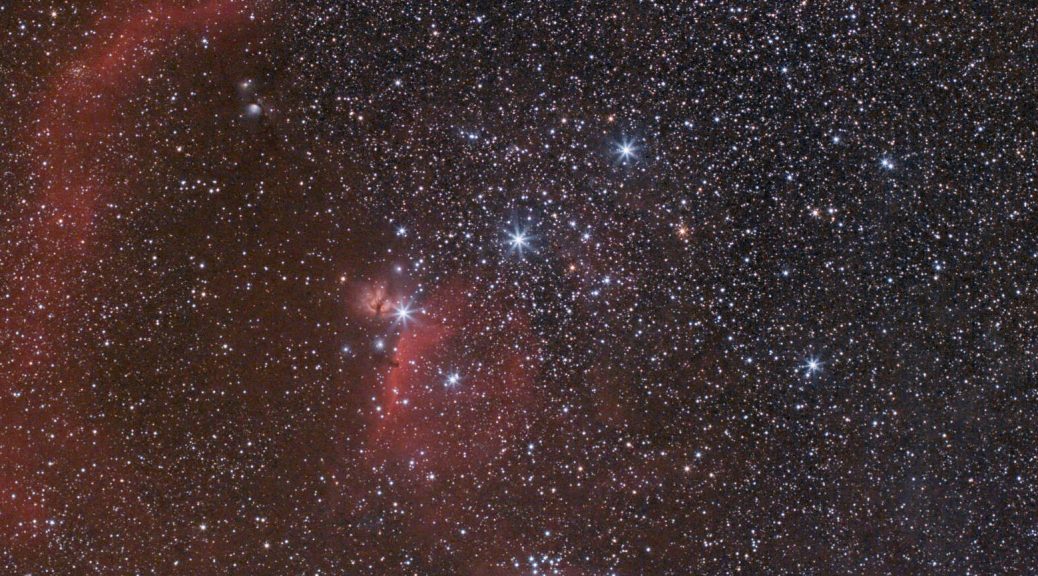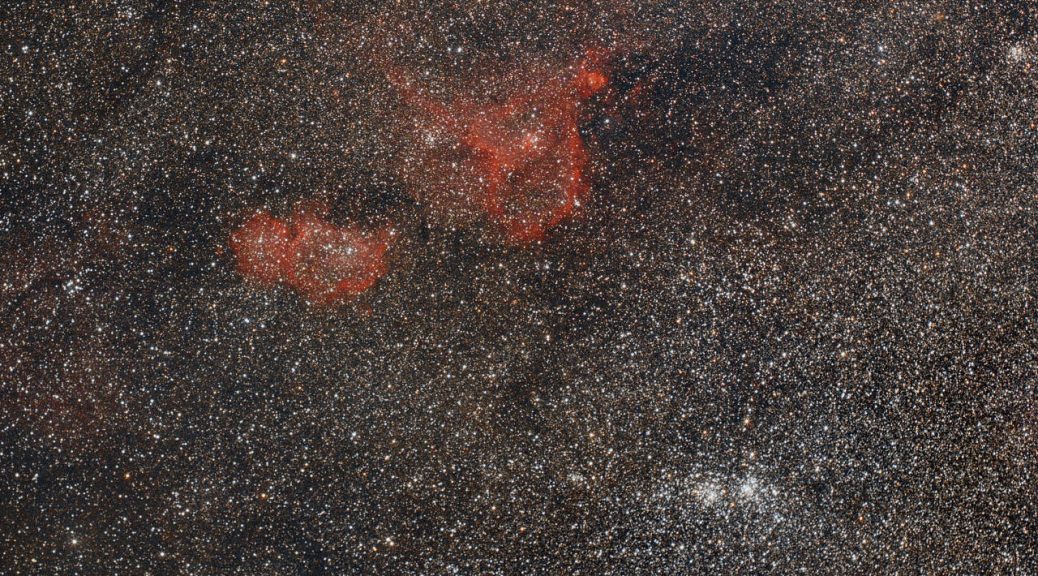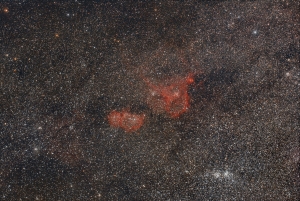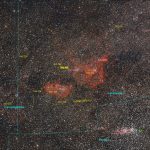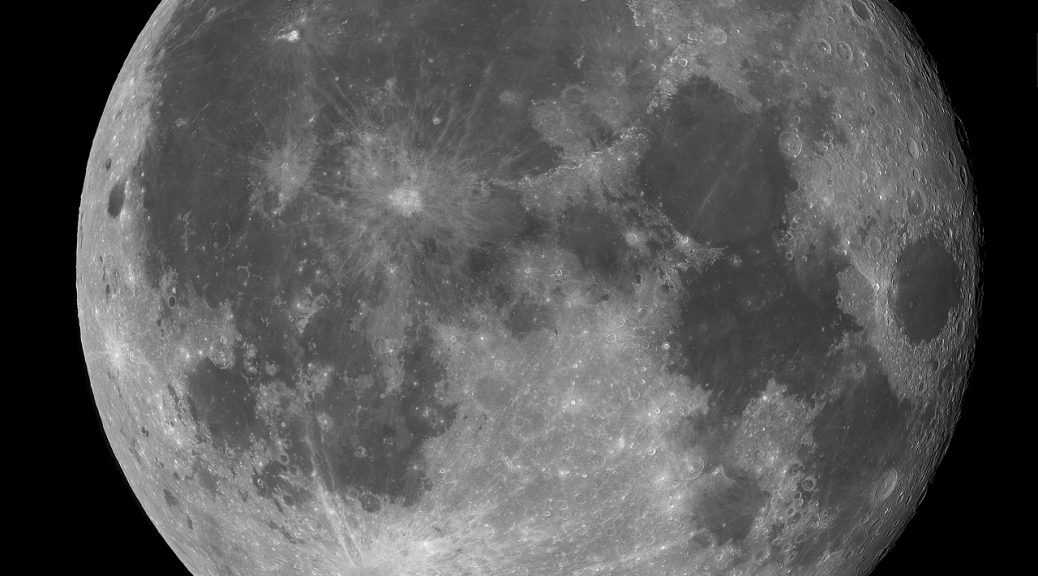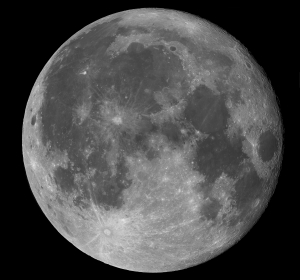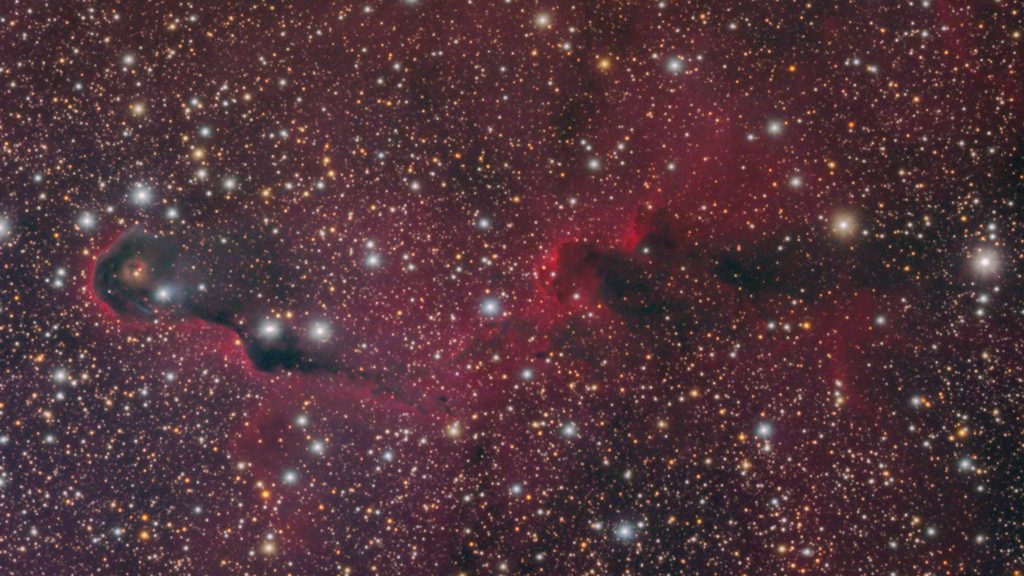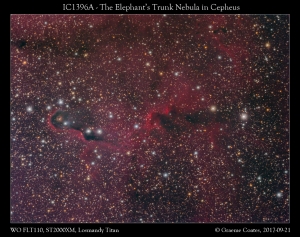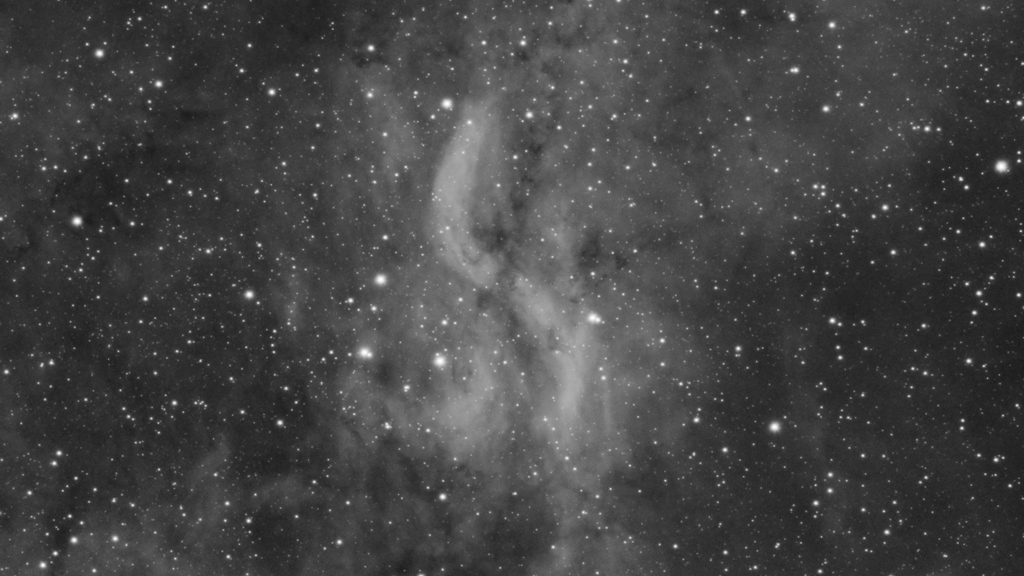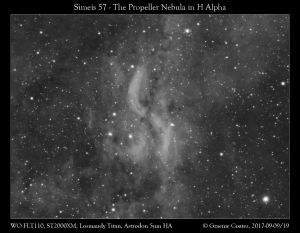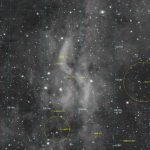An area of winter sky that surely needs little introduction. This is a widefield shot of central Orion, showing the three belt stars Alnitak, Alnilam and Mintaka and the “sword” (Orion Nebula and the Running Man Nebula). 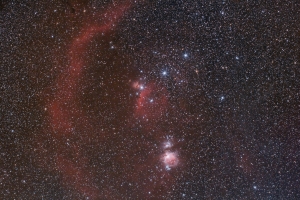 The whole region is surrounded by the arc of Barnard’s Loop, a 2 million year old supernova remnant (the precursor of this was in a multiple star system and created several “runaway stars” including AE Aurigae, Mu Columbae and 53 Arietis), as well as a multitude of other nebulae and dust clouds that form part of the Orion Molecular Cloud Complex.
The whole region is surrounded by the arc of Barnard’s Loop, a 2 million year old supernova remnant (the precursor of this was in a multiple star system and created several “runaway stars” including AE Aurigae, Mu Columbae and 53 Arietis), as well as a multitude of other nebulae and dust clouds that form part of the Orion Molecular Cloud Complex.
Around Alnitak, the easternmost star of the belt, the Horsehead Nebula (B33) and surrounding hydrogen emission is present, as well as the slightly more orange Flame Nebula (NGC2024) to its east.
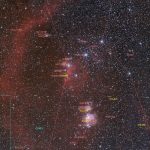 Also visible is the reflection nebula complex containing M78 and further towards the top of the image is the dark nebula LDN 1622, sometimes called “The Bogeyman”. To the west (right) of the Orion Nebula is Sh2-278, with further fainter areas of nebulosity beyond this surrounding Eta Orionis. These correspond to members of the LBN catalogue (LBN 907, 910, 915, 919, 937, 942, 945), though much more signal is needed to really get these to show well!
Also visible is the reflection nebula complex containing M78 and further towards the top of the image is the dark nebula LDN 1622, sometimes called “The Bogeyman”. To the west (right) of the Orion Nebula is Sh2-278, with further fainter areas of nebulosity beyond this surrounding Eta Orionis. These correspond to members of the LBN catalogue (LBN 907, 910, 915, 919, 937, 942, 945), though much more signal is needed to really get these to show well!
Image was taken on 25th/26th November 2017 from West Oxfordshire. Canon 350d (modded with Baader filter), Canon 85mm EF f1.8 USM lens (at f4.5). Image consists of 21 exposures of 5 min each at ISO 400, totalling 1h45m. Reduction and processing was performed using PixInsight and Photoshop.
Image centred at:
RA: 05h 29m 19s
Dec: +32° 29′ 10″
Field is 15° x 10°
